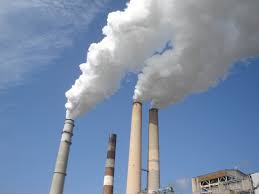-
The race to decarbonise steel in the energy transition – expert comment
Date posted:
-
-
Post Author
Tracey Biller
-

Due to its dependence on coal and coke as fuels and reducing agents, steel manufacturing remains one of the largest sources of greenhouse gas (GHG) emissions globally, responsible for around 8% of total energy-related CO2 emissions. Additional embedded GHG emissions arise in other parts of the iron and steel value chains, including in mining, transporting raw materials and finished products, and from the energy and electricity used in different manufacturing steps.
As steel companies worldwide prepare for the introduction of the Carbon Border Adjustment Mechanism and the phase-out of free allowances under the EU Emissions Trading Scheme (ETS), many are wondering how to lower the GHG emissions of their production methods and value chains.
In a comprehensive post published on the ERM website, the authors reveal the findings from ERM research for the IEA Greenhouse Gas R&D Programme (IEAGHG) profiling the lifecycle costs and emissions of emerging lower carbon steel technology pathways within the EU.
Key amongst the insights documented is that residual GHG emissions, including direct emissions at the steel mill and emissions embodied in raw materials, are significant even for the best-performing pathways. Moreover, on a cost comparison basis, basic oxygen steelmaking (BF-BOF) has the lowest levelized cost of production, even after accounting for projected EU carbon pricing (around €80/t CO2 in 2022 to almost €200/t CO2 by 2050) and including the phase out of free EU ETS allowances for steel producers by 2034.
However, the authors do indicate that the breakeven effective carbon price and the level of emissions intensity reduction is expected to improve over time for all technology pathways.
Perhaps more importantly, they conclude that …”low-carbon steelmaking does not necessarily need to reach cost parity with BF-BOF steel to be competitive, as increasing numbers of steel buyers are willing to pay a green premium for low-carbon steel and more government support becomes available to fund decarbonization.”
Read the full post here.
